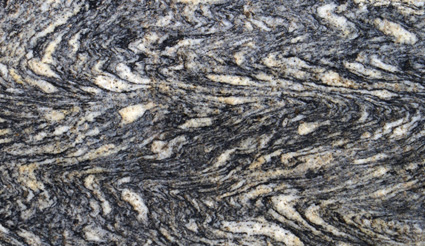Contents:
Deformation
a) Mylonites
b) Asymmetric shear zones
c) Constrictional deformation
d) Folding and transposition
Melting
e) Axial planar leucosomes
f) leucosomes on extensional shear zones
g) leucosomes on contractional shear zones
h) leucosomes cross-cutting foliation
i) melt interacting with folds
DEFORMATION IN RERU VALLEY. This valley runs N-S, from the Zanskar Shear Zone in the North close to the village of
Reru, into the high grade, anatectic rocks of the High Himalaya Crystalline.
a) Mylonites
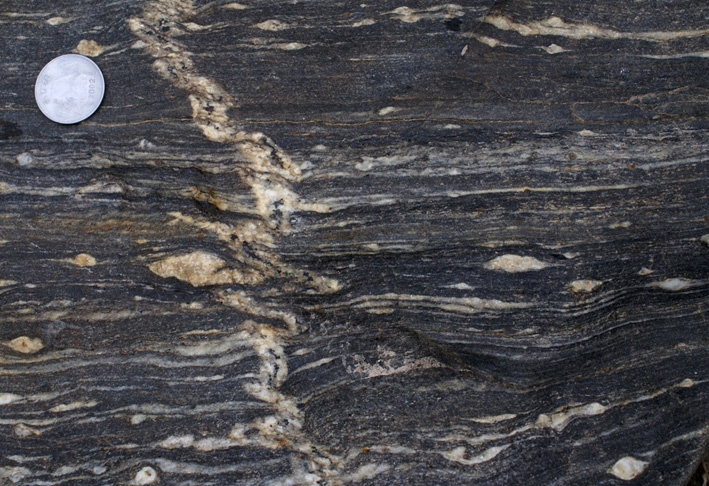
|
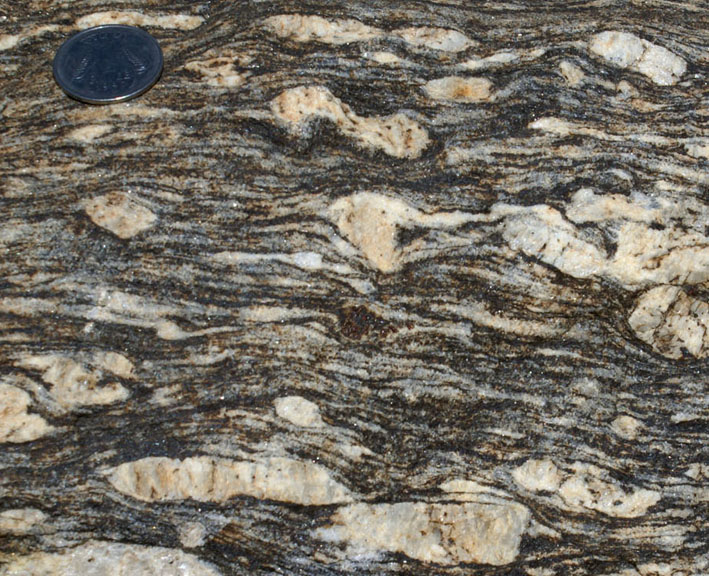
|
| Figure
1a) Feldspar porphyritic mylonite with strongly folded Tml-leucogranite dyke. Sense of shear: sinistral as indicated by phenocryst asymmetry
and C' foliation . |
Figure
1b) porphyroblastic mylonite, granitic protolith |
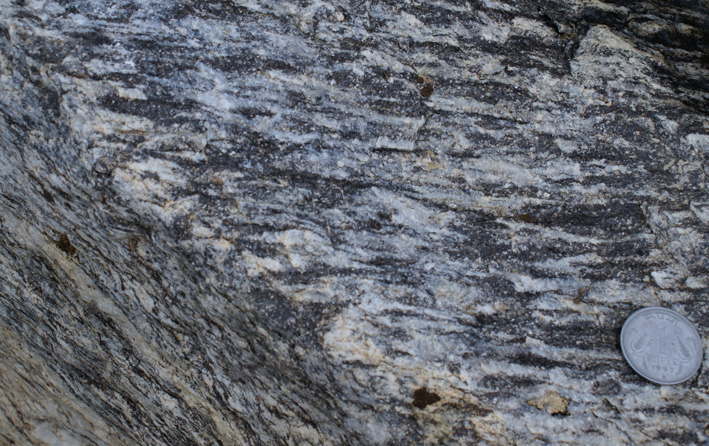
|
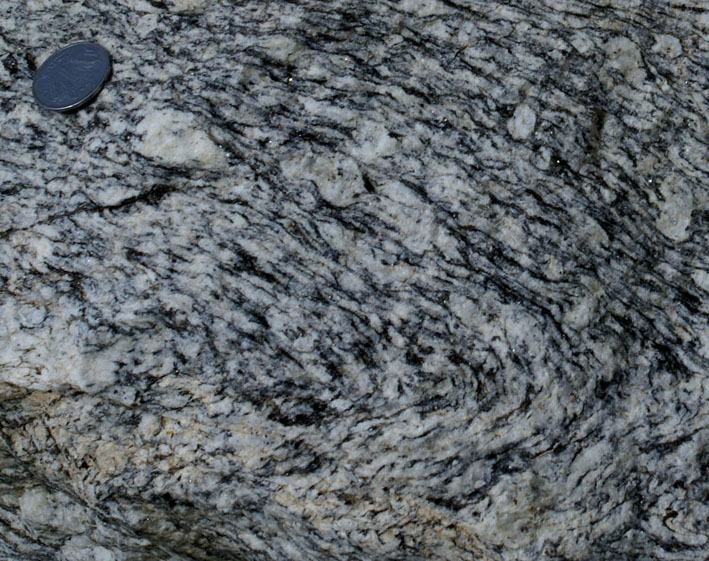
|
| Figure
2a) Two sides of
typical Ms-Bt mylonitic granite
showing intense lineation. |
Figure
2b) Folded coarse
gneiss |
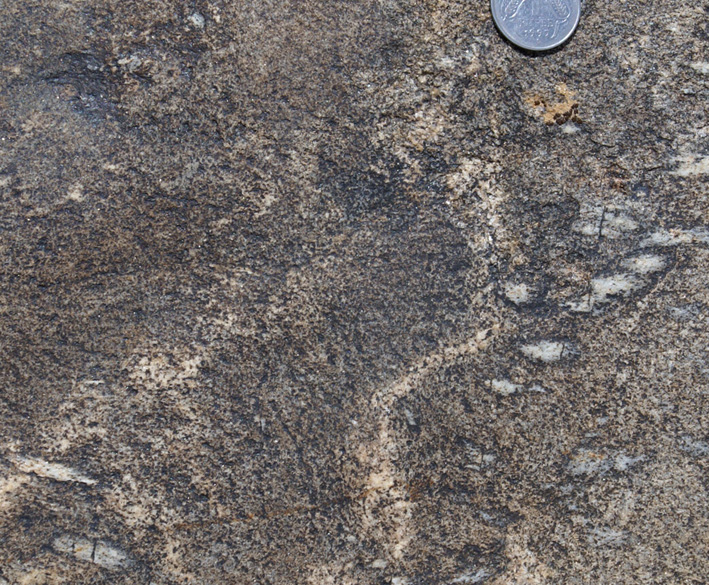
|
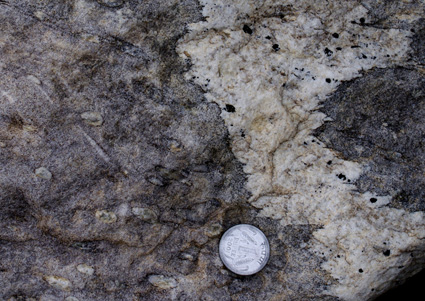
|
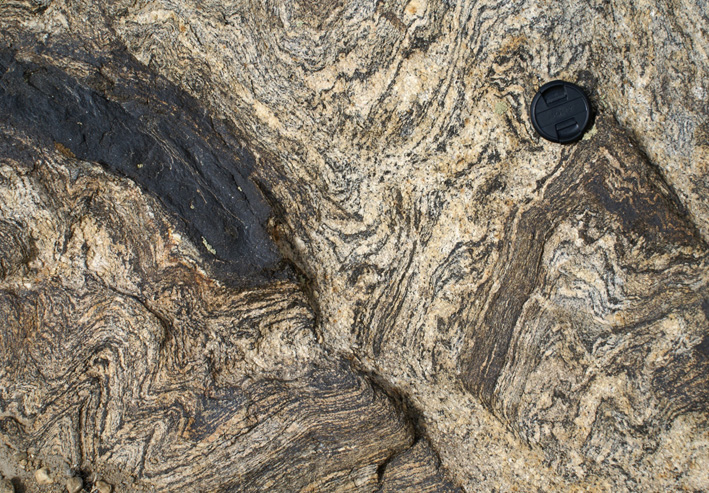
|
| Figure
2d) Sillimanite-biotite
schist with leucosome having diffuse
boundaries suggesting in situ origin. Lack of spatial relationship with
sillimanite suggest that
melting is unrelated to the presence of sillimanite. |
Figure
2e) Folded
sillimanite-biotite schist intruded by tourmaline
leucogranite with irregular boundaries and narrow melanosome rim in
places.
Rock face close to parallel with foliation. The leucogranite is
unrelated to sillimanite grains (left of coin). |
Figure
2f) Folded biotite-rich diatexite with refractory layers. |
b) Localized Shearing and Asymmetric Shear Zones
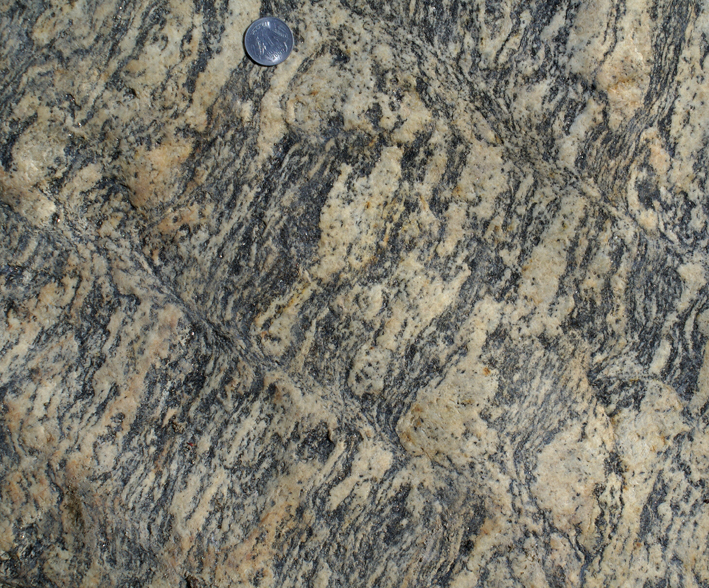
|
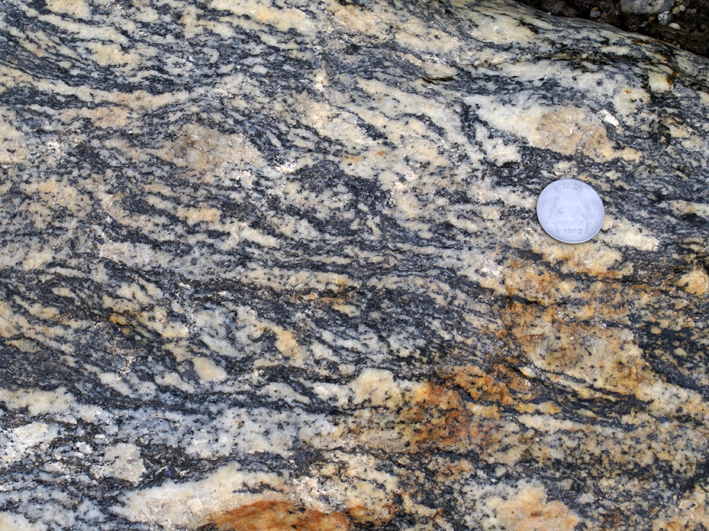
|
| Figure 3a) Typical migmatite orthogneiss with voluminous leucosomes with equally spaced, localized shear bands, formed after anatexis. |
Figure 3b) Similar to 3a but shear bands developed in the presence of melt which flowed through the shear plan. |
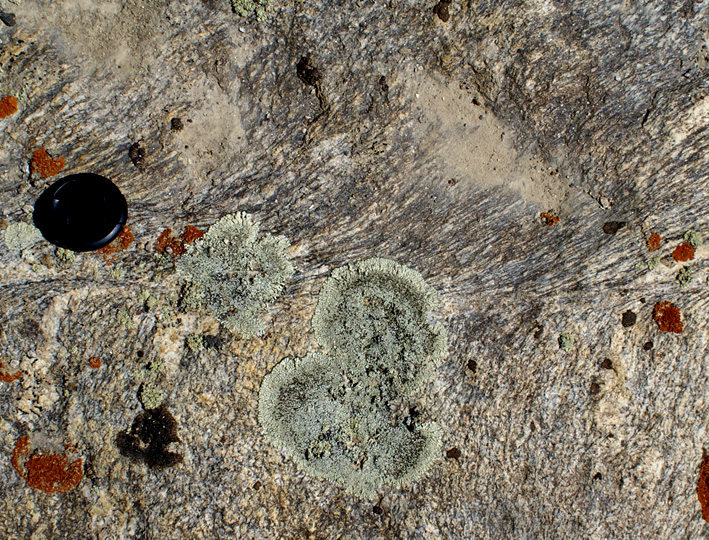
|

|
| Figure 3c) Asymmetric drag fold across shear zone. On the upper side the fold is wide, on the lower side it is sharp taking place over 1 cm. |
Figure 3b) |
c) Constrictional Deformation
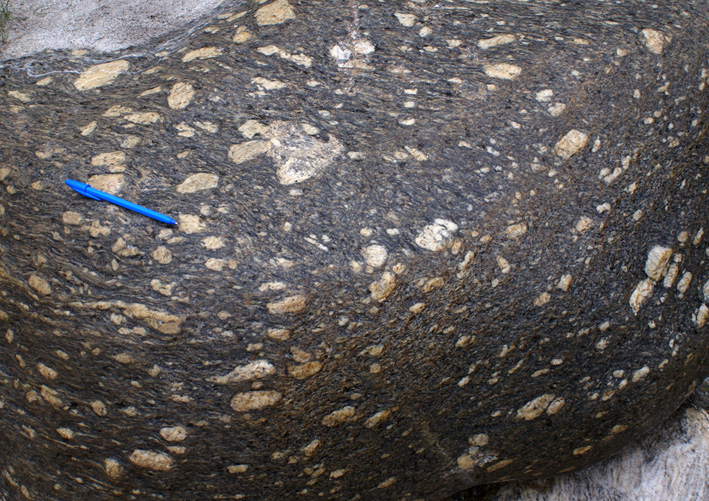
|
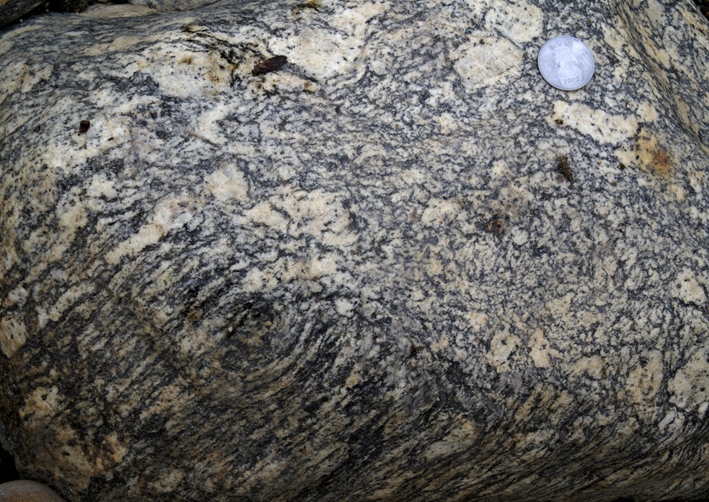
|
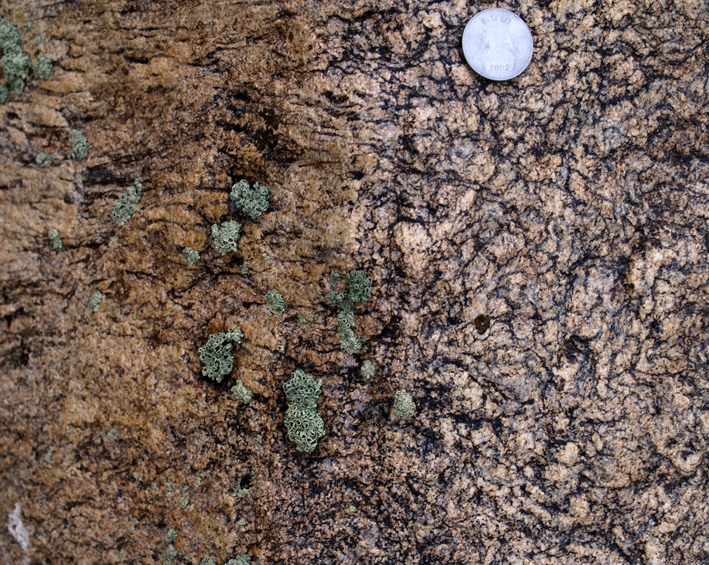
|
|
Figure 4a) Three sides of a feldspar porphyritic rock showing intense stretching of phenocrysts on two sides (left and top) and no significant
deformation on the third side (right) |
4b) Similar to (a) |
4c) Two sides of a migmatitic block showing stretched leucosome on the left, in contrast to round leucosome cross section on the right. |
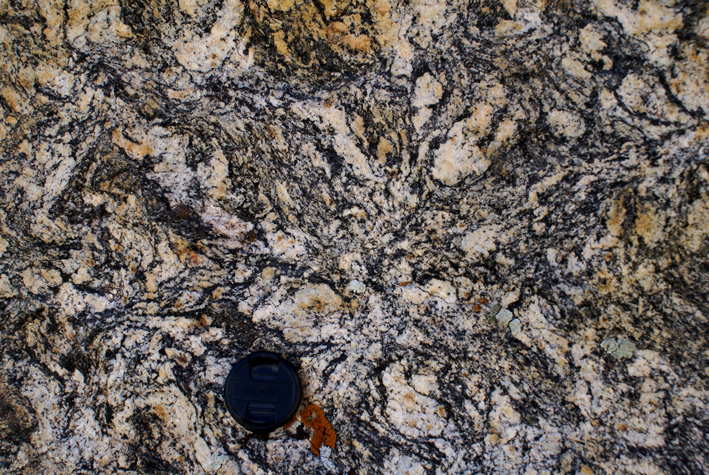
|
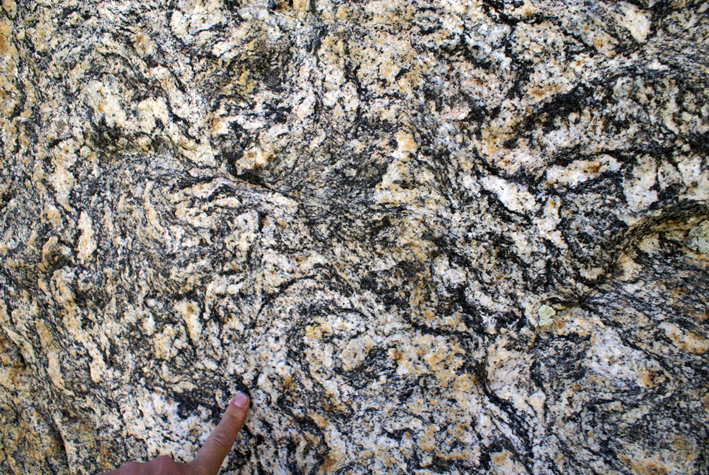
|
| Figure 4d) Migmatite with large proportion of leucosomes showing irregular foliation (perhaps radial) interpreted to represent constriction and
stretching perpendicular to the plane |
4e) Another example from the same block as (d). |
d) Folding and transposition
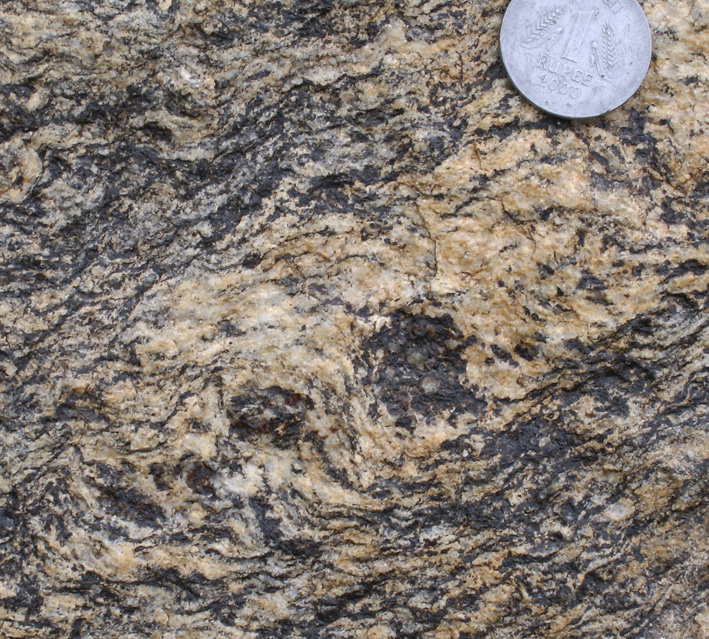
|
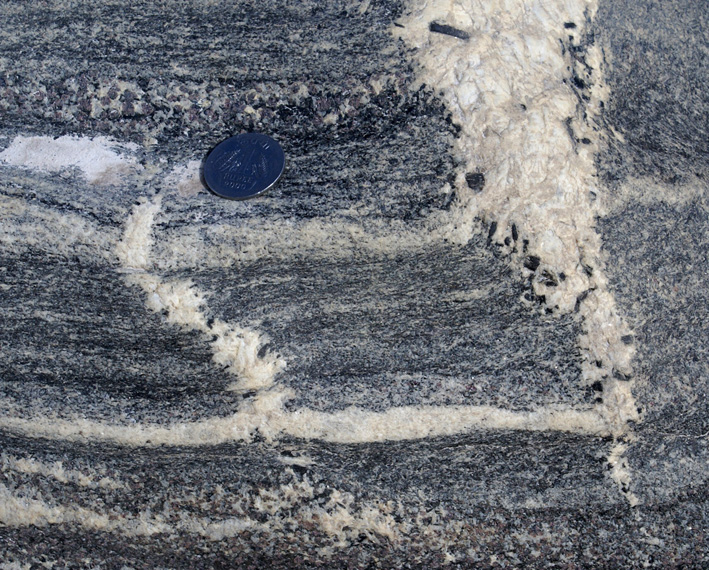
|
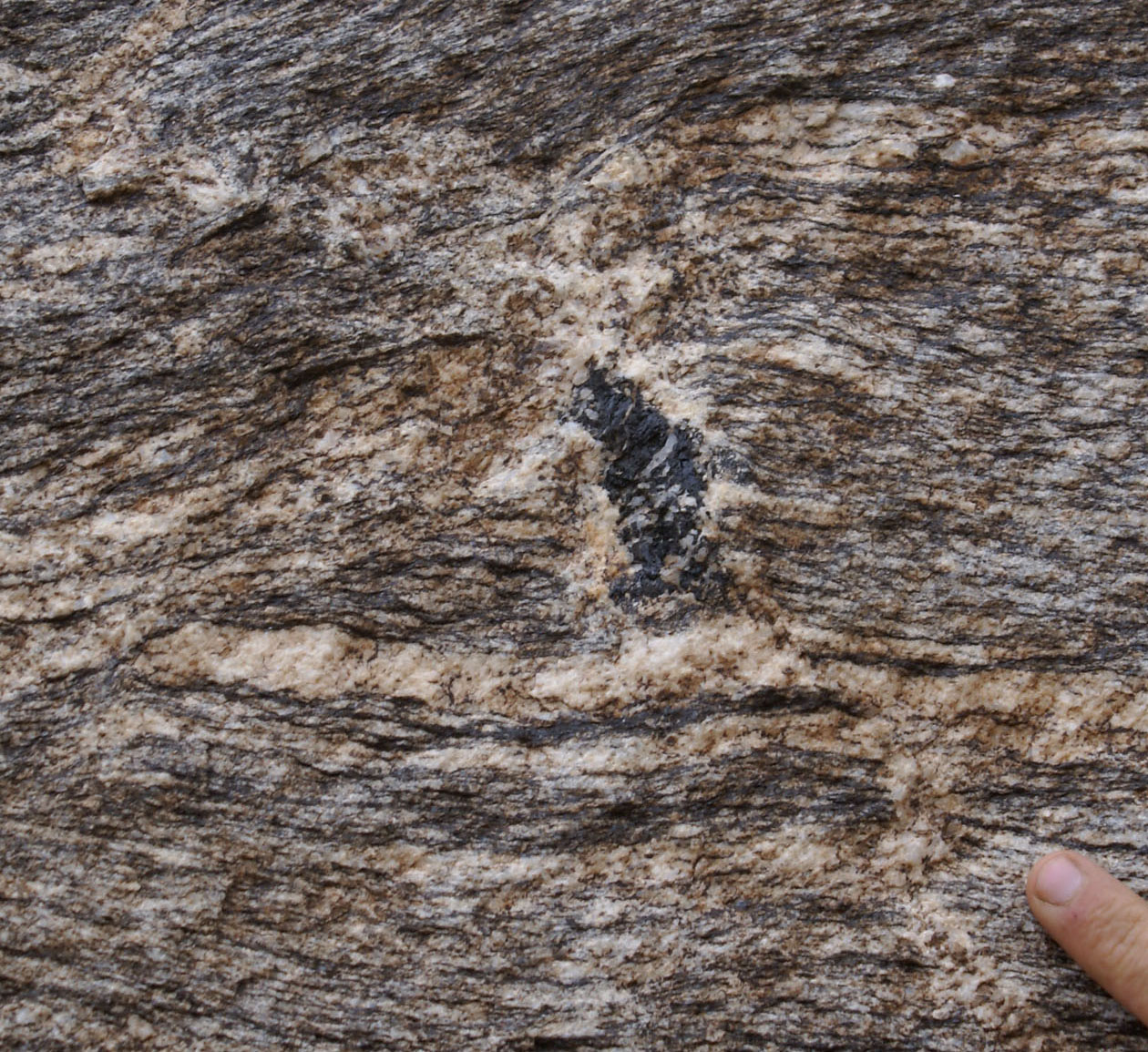
|
| Figure
5a) unfinished. |
Figure
5b) unfinished. |
Figure
5c) unfinished. |
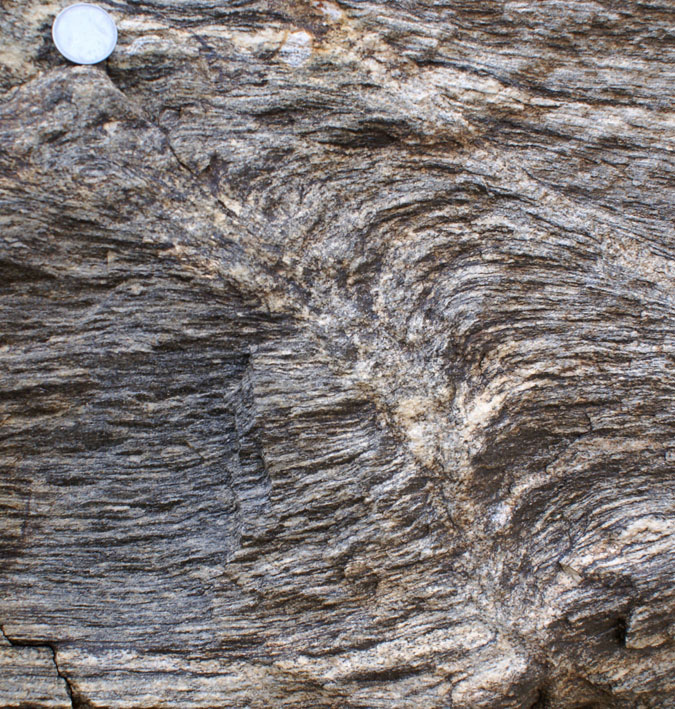
|
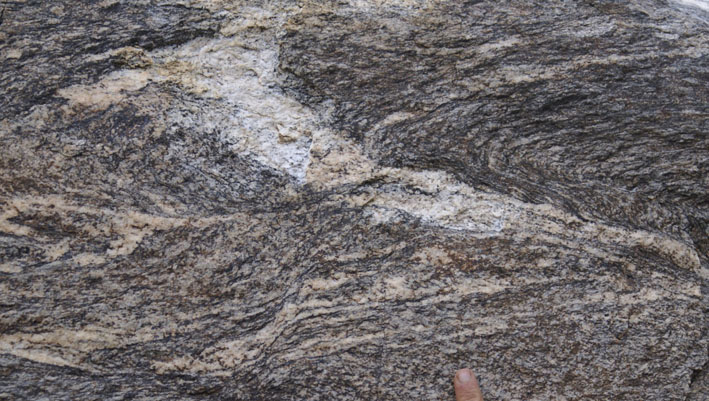
|
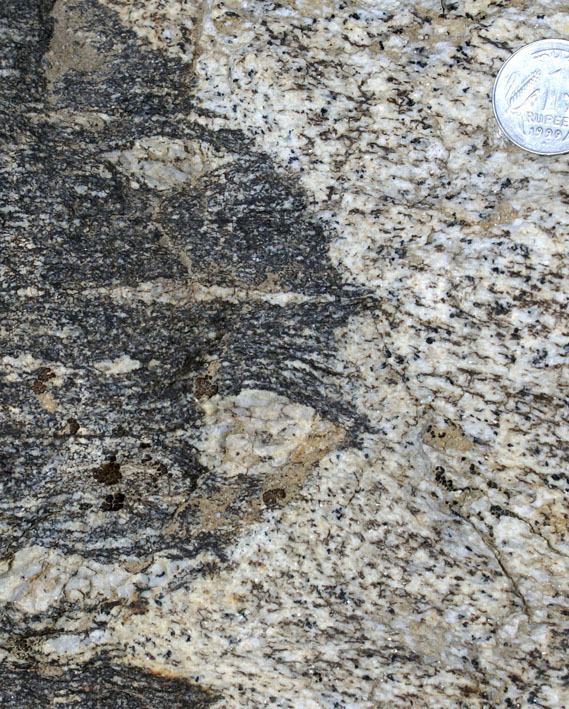
|
| Figure
5d and e) unfinished |
Figure
5e) Same as d but a later
stage of evolution of a
melt-lubricated fold-thrust. |
Figure
5f) unfinished. |
